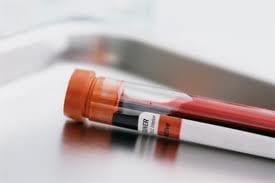The DWI blood test case is becoming the stock-in-trade of many law enforcement agencies across the state. Whether it’s a sample provided voluntarily after arrest, or obtained via search warrant following a refusal, defending blood tests are now commonplace for the DWI defense attorney. Making preparation more demanding is the technical nature of these cases. In fact, the DWI blood test may be on the list of most dreaded cases to defend. Nevertheless, prosecutors are relying on the blood tests which compels defense lawyers to effectively defend them. Despite their complexity, blood test cases can be divided into easily digestible areas of inquiry. Our topic this month addresses the most vulnerable component of the DWI blood test case . . . the blood draw.
To exploit this vulnerability lawyers are obliged to become experts in phlebotomy essentials. I suggest investing in good textbooks and get reading. My library includes: (1) Garza & Becan-McBride, (2010) Phlebotomy Handbook, Blood Specimen Collection from Basic to Advanced, (8th Ed). Upper Saddle River, New Jersey: Pearson Education, Inc. ($80 at Amazon); and (2) McCall & Tankersley, (2012) Phlebotomy Essentials, (5th Ed). Baltimore, Maryland: Wolters Kluwer. ($65 at Amazon). I also utilize the “Nurses Guide to Specimen Collection,” published by Becton-Dickinson Diagnostics. ($18 at Pulmolab). Once you become schooled you’re ready to astutely investigate your blood draw evidence. Since many police departments video the blood draw procedure your analysis can be extremely detailed. With a video there’s no safe haven for the phlebotomist. Conversely, if the police failed to record the draw make the prosecution pay. Demonstrate (through the State’s chemist) that a forensic blood draw is the pivotal moment in the testing procedure. Through your arresting officer demonstrate they possess the technology to video anything. Argue at closing, by failing to record the blood draw, the prosecution is compelling the jury to speculate about the draw’s efficacy.
One method used to attack the DWI blood test is implication. In other words, press into service a good DWI video to suggest (indirectly) the blood test result must be erroneous. However, scoring direct points through the phlebotomist, employing a potential sample contamination theme, is more effective. If the blood sample was contaminated then the test result must be compromised. Your phlebotomy textbooks teach the procedures employed to obtain contamination-free samples. Consequently, when the phlebotomist fails to observe published procedures you’re scoring potential contamination points. And, thankfully, there are a limited number of issues upon which to cross-examine. Further, phlebotomists are not accustomed to drawing blood for forensic purposes and aren’t accustomed to testifying. Their experience is limited to clinical blood draws which are obtained to direct patient health care decisions rather than samples used to determine whether a citizen goes to jail.
Our refuge on cross-examination is a learned treatise on phlebotomy. See TEX. R. EVID. 803(18). A successful cross necessitates your witness acknowledges some authoritative source on the subject of their testimony. Put another way, we want the learned treatise to corner them. Consider serving the phlebotomist with a subpoena duces tecum prior to trial compelling them to produce their own authoritative treatise. When they bring their favorite textbook to trial . . . use it to impeach them. Another method is persuading the trial judge to take judicial notice of your treatise pursuant to TEX. R. EVID. 803(18) and TEX. R. EVID. 201. See Emerson v. State, 880 S.W.2d 759 (Tex. Crim. App. 1994)(courts authorized to take judicial notice of facts outside the record if they are “capable of accurate and ready determination by resort to sources whose accuracy cannot reasonably be questioned”). Consider filing a motion asking the court to take judicial notice of your sources. Include copies of the relevant chapters as exhibits and admit them as a bill of exception if the court denies the motion. Equally important is demonstrating harm by showing how you would have cross-examined the phlebotomist with the treatise and argued those facts.
Following is a quick-and-dirty list of issues affecting the blood draw, sample quality, and integrity. Use this list as your starting point:
Hand Sanitization: Proper hand hygiene (prior to gloving) plays a major role in preventing infection and sample contamination. (McCall p. 238; Garza p. 307);
Tourniquet Release: Release the tourniquet after the blood has begun to flow into the collection tube. Do not leave the tourniquet on for more than 1 minute as test results may be affected. (McCall p. 250; Garza p. 330; Nurses Guide p. 19);
Clean and Air-Dry Site: The puncture site must be cleaned with antiseptic. (McCall p. 244). Clean the site with a circular motion using concentric circles moving out from the puncture site. (McCall p. 245; Garza p. 331, 333). Allow the site to dry by evaporation as this process destroys microbes that can contaminate the sample. (McCall p. 238, 245; Nurses Guide p. 26). Antiseptic does not sterilize the site, rather it inhibits microbial growth. (McCall p. 244). Do not dry the site with unsterile gauze. (McCall p. 246). Do not fan or blow on the site as this may recontaminate the site. (McCall p. 246). Do not touch the site after cleaning it. (McCall p. 246; Garza p. 331). Cleanse the site again if it is touched before the puncture. (McCall p. 246; Garza p. 331);
Equipment Preparation: Check the expiration date on each collection tube. (McCall p. 246);
Tube Filling: Blood tubes contain a vacuum and are designed to obtain a predetermined volume of blood. If the tube does not fill completely that is evidence the sterile vacuum has been compromised. (McCall p. 206);
Tube Mixing: Gently and completely invert the tube 3-8 times or according to manufacture’s recommendation. (McCall p. 251; Garza p. 338; Nurses Guide p. 17, 20). Inadequate or delayed mixing can lead to micro-clot formation and affect test results. (McCall p. 251; Nurses Guide p. 26).
I have yet to see even experienced health care professionals draw blood “by the book.” By using published phlebotomy basics to cross-examine the blood collection procedure we can score legitimate points to argue at closing. Use this list as your starting point, get reading, and good luck at your next DWI blood test trial.
(“Off the Back” featured in the “Voice For The Defense” November 2014)
Stephen Gustitis is a criminal defense lawyer in Bryan-College Station. He is Board Certified in Criminal Law by the Texas Board of Legal Specialization. He is also a husband, father, and retired amateur bicycle racer.
“Off the Back” is an expression in competitive road cycling describing a rider dropped by the lead group who has lost the energy saving benefit of riding in the group’s slipstream. Once off the back the rider struggles alone in the wind to catch up. The life of a criminal defense lawyer shares many of the characteristics of a bicycle rider struggling alone, in the wind, and “Off the Back.” This column is for them.
Related Posts:
Warrantless Blood Draws Held Unconstitutional
Representative Bryan-College Station DWI Results
How to Challenge the DWI Field Sobriety Tests






